Keith Smith - My Blog
system_thread_exception_not_handled xen.sys BSODFriday, September 4, 2015 - Posted by Keith A. Smith, in VMware, Xen, Microsoft, LinuxThe system_thread_exception_not_handled xen.sys BSOD issue was interesting to me;  I wanted to see if I could reproduce this. I exported a VM from Amazon's EC2 because Amazon EC2 uses the Xen hypervisor as well. I upload the VM into a datastore on vSphere and convert the virutal disk as I noted here http://bit.ly/1UrCpqN I power on the VM and I get the same system_thread_exception_not_handled xen.sys BSOD. I boot into safe mode I run a msconfig from the search, Under the boot tab I chose base video because I still had the xentools installed on the VM's. So that had to be the culprit right? I reboot the VM, and it boots fine, at this point I uninstall all the XenServer/Citrix related items. I then restart the VM and I was glad to see it make it to the login screen. Solution: I think...  The way to avoid this issue if you are going from Xen to VMware or any other hypervisor is to uninstall all the XenServer/Citrix items before performing the export of the VM.
|
 1 Comments 1 CommentsTweet |
XenServer to VMware MigrationFriday, September 4, 2015 - Posted by Keith A. Smith, in Network, VMware, Xen, MicrosoftWell, it's time to put XenServer out to pasture in favor of vSphere 6.0, the coolest thing I will miss is XenCenter which can be installed on any modern Windows OS. In the Citrix world, you do not need a dedicated XenCenter server. In the VMware world you do need a dedicated vCenter server. Not that big of a deal, but something to note if any of you start comparing the products. Start with interoperability testing In the past, I have used some version of the vCenter Converter to convert VM's from some other product. I figured I would test the theory of simply exporting a VM's from xencenter in an ovf format and importing it into vcenter. That attempt failed with the following error "Could not parse the document: 'encoding specified in XML declaration is incorrect". Upon testing the same ovf export on VMware workstation and virtualbox I received the same error. Back to the old Method It would have been great to power off VM's then export them from xencenter, then import them into vCenter. With this not being possible at the time I proceed to fire up the vCenter Converter. Using the vCenter Converter I was able to convert a few of the VM's, in some of the other attempts I received errors like converter error "Host hosts.allow: ALL:LOCAL,x.x.x.x hosts.deny: ALL:ALL Another workaround for the *nix VM's is to upload the virtual disks to the datastore, and then proceed to convert them. At this point, you could create a new virtual machine and use the new created virtual for that machine. For me, this worked great, and the *nix VM's would boot successfully. In some of the other cases, I changed from hostname to IP in the vCenter Converter, and that allowed me to convert the nix VM. I also had some instants where Windows VM's wouldn't convert; they would fail and say 3% network is unreachable host key can't be retrieved or a certificate in the host's chain is based on an untrusted root converter. For the VM's that gave those errors, I installed the vCenter Converter on the VM itself and chose This local Machine at the target. As you can see, I did quite a few workarounds to keep making progress on exporting the VM's. Into to vSphere as the final destination At this point, I have all VM's exported, I proceed to upload them into a datastore in vSphere environment. After the uploads were complete, I had to convert the disks to proper vmdk's that could be used by the VM on vSphere. On the hypervisor I enable SSH, I then proceed to SSH into the hypervisor and make my way into the datastore that housed the VM's. There were quite a few sub directory's so I had to travel into each one cd /vmfs/volumes/whatever/foldername/VMName then run vmkfstools -i currentvirtualdiskname.vmdk newvirtualdiskname.vmdk I had to do that for all the virtual disks that were uploaded. Once all that was done I added the vmx files to the vCenter Inventory, from there I had to remove the original virtual disk's and attach the new virtual disk I created. In the process, I was prompted to remove and delete the old virtual disks which is nice because that way I won't have to go back and clean up the old virtual disks. I now power on one 2012R2 VM and one 2008R2 VM for testing to ensure that they boot up and function as they should. The 2008R2 boots fine however, the 2012R2 VM blows up with the BSOD. I power up another 2012R2 VM so see if this is a one-off or not, of course, the same result of a BSOD with the error of system_thread_exception_not_handled xen.sys. 
At this point I know there is something wrong with 2012R2 and Xen, I had to boot up the VM in safe mode by choosing Troubleshoot. 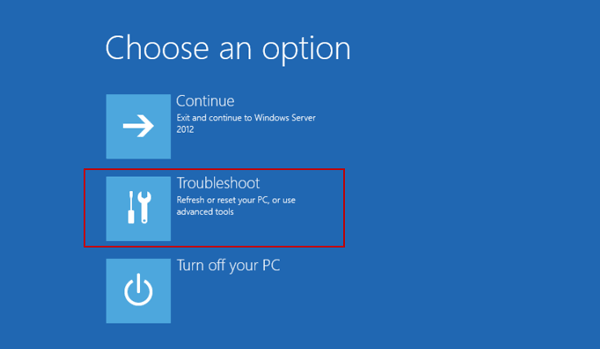 Click Advanced options 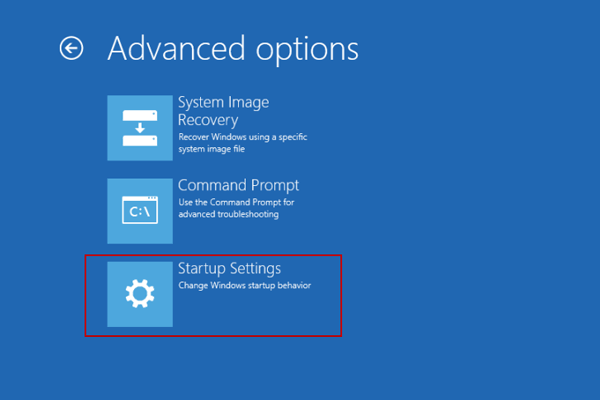
Click Startup Settings. 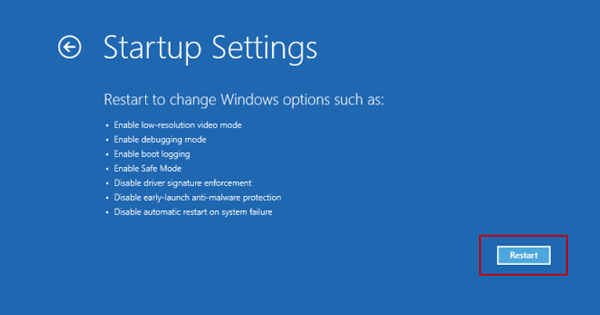
Click Restart Once in safe mode I run a msconfig from the search, Under the boot tab I chose base video 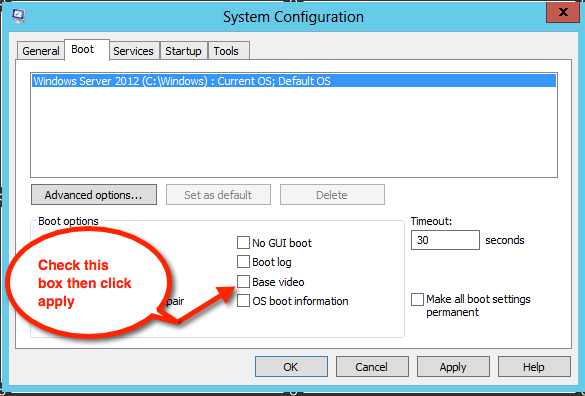
I still had the Citrix/Xen related items installed on the VM's, so that had to be the culprit. 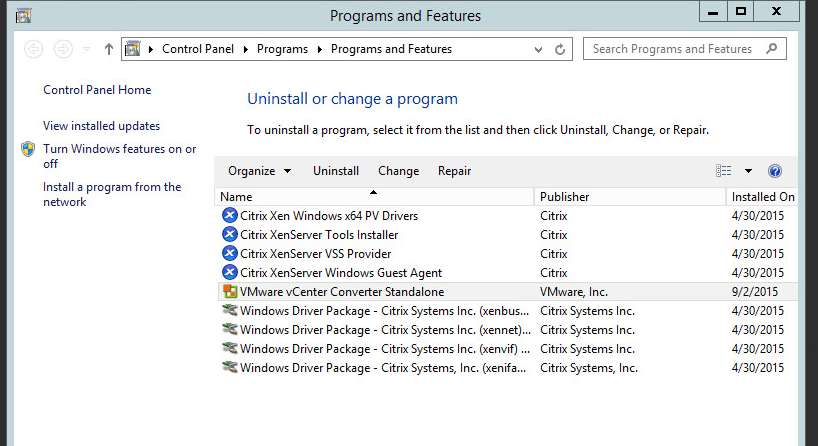
I reboot the VM and it boots fine, at this point I uninstall all the XenServer/Citrix related items. I then restart the VM, and I was glad to see it make it to the login screen. I did have some cases where the VM did BSOD after the msconfig modification and XenServer/Citrix items were remove but upon a restart the VM does proceed to the login screen. I had to do the aforementioned procedure for every 2012R2 VM that had a BSOD system_thread_exception_not_handled xen.sys. I should note that this project took me about 3 1/2 days to complete due to the above technical complications and many other variables.
|
 0 Comments 0 CommentsTweet |
Enable SSH login with RootFriday, September 4, 2015 - Posted by Keith A. Smith, in Linux
I recently had a need to ssh into a *nix box using the root credentials for a particular situation. It took me a few minutes to figure out the following
Once I was done I did the above steps again but changing the "PermitRootLogin" to "without-password"
|
 0 Comments 0 CommentsTweet |
Our time in SeattleWednesday, August 26, 2015 - Posted by Keith A. Smith, in Journal of thoughts
This Post is private, you need to be a active susbcriber to vew this Post. Click here to Subscribe
|
 0 Comments 0 CommentsTweet |
My Thoughts on DockerTuesday, June 30, 2015 - Posted by Keith A. Smith, in Journal of thoughtsDocker uses Linux LXC to encapsulate a fixed environment into which you have built some software that depends on a stable config and wants isolation from everything else. To the software it feels like it is alone on a machine, but actually it is alone in what Docker calls a container.
You can have 100s to 1000s of containers running on one machine. You can also group containers together to make larger projects. Obviously with the encapsulation, you can patch or upgrade the OS without any fear it will break something running in a container. Unlike VMware the encapsulation is not on the chip level with a hypervisor, but on the OS level. So those big servers you have, the ones that can easily run heaps of things, but you don't really want to have heaps of VMs? (which really just passes the update/patch/reboot buck, if you think about it), these can run heaps of Containers. In my opinion Docker reminds me of bsd 4.0 jails, developed in 2000 for a hosting company which predated Solaris zones. Docker has many concerns, particularly around security, which in turn can be a gating or otherwise limiting factor in acceptance by several industries. This is the nature of open source - there are many options as every individual that disagrees with someone else spawns his own solution addressing what he views as the most important problems. In the end there are many container options, even just in the case of linux.
Companies that have embraced container-based virtualization more often have more than just one such technology in place. This year's openstack summit showed this strongly. I do see great potential with containers. One of the caveats i am facing right now when designing my potential future architecture, it is redundancy/availability. There is no live migration of containers. So you have to consider that. You would have redundant containers, but i can see where IP addressing can get a bit complicated when using keep-alive or ucarp. And this is because they wouldn't work at the container level, but at the docker host level. If you lose a container, the virtual IPs wouldn't be active on the other host. And docker uses its own network addressing for the containers. Therefore, essentially each docker host is a "router".
|
 0 Comments 0 CommentsTweet |



